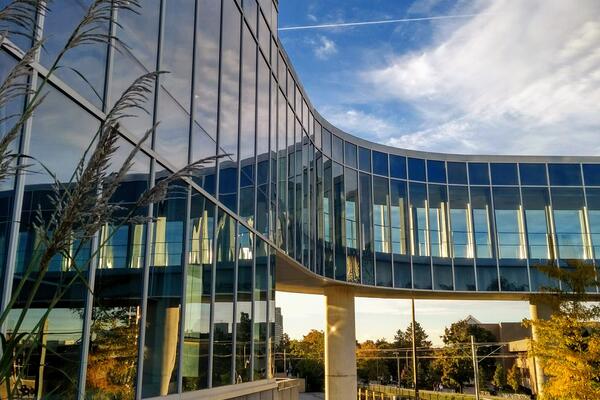
Quidditch for non-wizards
New quidditch club at Waterloo brings Harry Potter fans together for exercise, fun and “magic”

New quidditch club at Waterloo brings Harry Potter fans together for exercise, fun and “magic”
By Marian Wells Communications and Public AffairsHow do Waterloo students play quidditch, the airborne Harry Potter game, without flying or magic?
“We’ve gotten good at explaining it to people,” says Nathan Boutilier, president of the new Waterloo quidditch club. “It’s also one of those games that, once you get going, you learn really fast.”
 There’s basically one major difference between the quidditch played in the popular Harry Potter books and movies and the one played on campuses around the world. Non-wizards, known as muggles, can't fly so they must show they are “flying” by keeping a broomstick between their legs during play. Everything else is the same as it is at Hogwarts, the fictional boarding school attended by Harry Potter and his friends.
There’s basically one major difference between the quidditch played in the popular Harry Potter books and movies and the one played on campuses around the world. Non-wizards, known as muggles, can't fly so they must show they are “flying” by keeping a broomstick between their legs during play. Everything else is the same as it is at Hogwarts, the fictional boarding school attended by Harry Potter and his friends.
Positions and nets are the same and points are scored with quaffles and bludgers. In muggle quidditch, quaffles are volleyballs and bludgers are dodgeballs.
The snitch is a player who can run beyond the limits of the playing field to avoid being caught.
More than 60 teams across Canada
Playing quidditch has become an international phenomenon, with teams set up at campuses around the world. In Canada alone, there are more than 62 teams.
Boutilier says this version of quidditch is more difficult than its magical counterpart because being on the ground requires players to call upon skills from all different sports such as rugby, dodgeball, basketball and soccer. In the end, a wide range of people can enjoy this game, based on different levels of athletic ability.
The club was started at the beginning of the Spring 2013 term by Boutilier and two of his friends, Vanessa Wainwrite, club vice president and Jacquelyn Mayo, events co-ordinator.
“It’s meant for people who just want to celebrate Harry Potter and keep it going because the movies are over, and it’s also there to have an athletic workout once a week,” says Boutilier.
Spring is only the beginning; Boutilier says he’s looking forward to seeing quidditch played in the fall and even winter term. He welcomes everyone to come and try it out and meet new friends. He says: “We have a great mix of people.”

Read more
Here are the people and events behind some of this year’s most compelling Waterloo stories

Read more
A closer look at the University of Waterloo’s beloved network of pedestrian tunnels and bridges

Read more
A winter holiday message from President Vivek Goel
The University of Waterloo acknowledges that much of our work takes place on the traditional territory of the Neutral, Anishinaabeg, and Haudenosaunee peoples. Our main campus is situated on the Haldimand Tract, the land granted to the Six Nations that includes six miles on each side of the Grand River. Our active work toward reconciliation takes place across our campuses through research, learning, teaching, and community building, and is co-ordinated within the Office of Indigenous Relations.